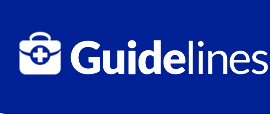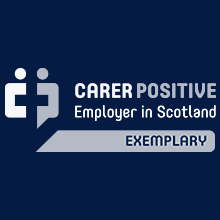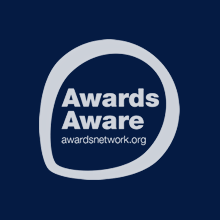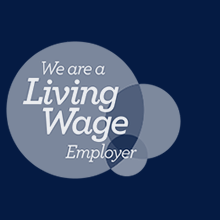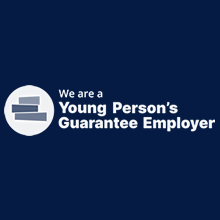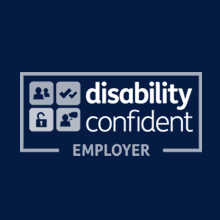Information
Lactation mastitis is an inflammatory condition of the breast, which encompass a spectrum of conditions, which may or may not be accompanied by infection. The inflammation of the mammary gland most often presents in a segmental distribution of the ducts, alveoli and surrounding connective tissue. The spectrum includes ductal narrowing, inflammatory mastitis, bacterial mastitis, phlegmon (ill-defined fluid collection), abscess, galactocele (milk collection in a cyst like cavity) and subacute mastitis. These may or may not be accompanied by infection. Breast abscess, a localised collection of pus within the breast, and sepsis are severe complications of mastitis.
Mastitis is usually associated with lactation but can also occur in non lactating women. The incidence of lactation mastitis is reported to be between 10% to 33% of breastfeeding women; it is most common within the first 2-3 weeks postpartum.
Abscess is reported to occur in 3% to 11% of women with mastitis; it is most common during the first six weeks postpartum. Research demonstrates that multiple factors contribute to the development of mastitis, such as hyperlactation, microbial factors and medical factors. The lactating breast is a dynamic gland that responds to internal and external hormonal stimulation. Common organisms in lactational mastitis include Staphylococcus (S. aureus, S. epidermidis, S. lugdunesis, and S. hominis) and Streptococcus (S. mitis, S salivarius, S.pyogenes, and S. agalactiae). When treated appropriately women will make a rapid and complete recovery.
M.A. & H.M. 29-04-25
Signs and symptoms of mastitis:
- A localised area of tenderness, erythema, firmness and or swelling in the breast.
- Pyrexia and/or flu-like symptoms
Suspect a breast abscess if:
- There is a history of recurrent mastitis, prior breast abscess, bacterial mastitis of phlegmon*.
- A palpable swollen, fluctuant lump within the breast which is warm and tender to touch with red discolouration of the skin
- Fever/general malaise
- Systemic symptoms that resolve and recur as body walls of the infectious process
- Systemic symptoms that worsen until abscess is drained.
* Phlegmon is an ill-defined fluid collection
Who to refer:
Consider referral in the following postnatal women:
- Mother is very unwell / has signs of sepsis
- The infection is progressing rapidly
- The woman is haemodynamically unstable
- An abscess is suspected
- An episode of mastitis does not settle with one course of antibiotics
- A second episode of mastitis occurs
- MRSA is suspected (seek advice from microbiologist at RIE on 0131 5363373 during “office hours” or via hospital switchboard 0131 536 1000).
Who to refer:
Referral to hospital
- Up to 6 weeks postnatal – refer to St John’s or Simpson Centre maternity hospitals (Please see Appendix 1 which you will find in the full guideline in the Resources and Links section)
- Beyond 6 weeks postnatal – refer to Breast Unit at Western General Hospital (Please see Appendix 1 which you will find in the full guideline in the Resources and Links section)
Prevention of engorgement:
Engorgement is related to interstitial oedema and will present as bilateral breast pain, firmness and swelling. This usually occurs between days 3 and 5 postpartum but can be as late as day 9-10.
- Good positioning and attachment technique
- Unrestricted feeding
- Help with feeding & expressing if baby not yet feeding effectively
- If breasts become overfull at any time, mother should always express enough milk to soften the breasts until she is comfortable – it is not necessary to empty the breasts
Management of engorgement:
Feed baby and/or express every 3-4 hours until breasts are comfortable – then follow prevention of engorgement advice above. If not able to empty breasts, mother should seek help urgently from her
- Midwife
- Health Visitor/ Family Nurse Partnership (FNP)
- Local Breastfeeding Support Group
- Specialist Breastfeeding Service – for contact details see Appendix 1, which you will find in the full guideline in the Resources and Links section
Supportive care and measures which may help:
- Warm shower or bath, warm compresses
- Light sweeping of the skin can support lymphatic drainage. Deep breast massage is not recommended
- Hand expressing may cause less trauma to a tender breast than using a pump
- Non-steroidal anti-inflammatory medication may help reduce swelling and allow milk to flow more readily (e.g. ibuprofen 400 mg orally 6-8 hourly initially, then 8 hourly as required once pain and localised swelling improves)
- Between feeds, ice or cold compress can be applied
Management of lactation mastitis in primary care:
In an early stage, when signs and symptoms of mastitis have been present for less than 12 to 24 hours, it may be possible to manage the condition without antibiotics as follows:
- Ensure women has a full breastfeeding assessment by a midwife/HV/FNP to ensure effective positioning and attachment at the breast (see Appendix 2 in the full guideline which you will find in the Resources and Links section- breastfeeding assessment tool)
- Support women to continue to feed from both breasts
- If unable to breastfeed advise women to express sufficient milk to match the needs of her baby
- Advise women to rest and not wear a bra, especially at night.
There should be a low threshold for using antibiotics where infection is suspected after 12-24hrs. Breastfeeding should continue frequently (e.g. breastfeeding 8 to 12 times per day) to promote effective milk removal. If these measures do not result in an improvement in symptoms within 24 hours, or if symptoms are severe or if there are any signs of systemic infection continue (as per above) and start antibiotics as follows:
Antibiotic treatment in primary care
Early recognition and treatment may prevent complications such as breast abscess. Antibiotic therapy is based initially on likely pathogens. In cases of failure of initial treatment or where complications arise, cultures may be indicated, and treatment may have to be altered depending on the specific pathogens isolated and corresponding antibiotic susceptibilities.
1st line Flucloxacillin, Oral 1g Four times daily for 7 days – if no improvement after 7 days see treatment course below.
Penicillin Allergy – Clarithromycin, Oral 500mg Twice daily for 7 Days – if no improvement after 7 days see treatment course below.
Treatment course: 7 days depending on clinical response. Infections should begin to respond within 48 hours. If the infection is worsening despite oral antibiotics then seek help from obstetricians, breast unit surgeons or microbiologist, see Appendix 1 for details. Send a swab of the breast and a MRSA screen if there are risk factors for MRSA infection.
Safety of continuing to breastfeed:
- Mother – stopping breastfeeding during an attack of mastitis does not help the mother recover and on the contrary, there is a risk that it can make her condition worse. Regular softening of the breast by feeding and/or expressing is essential to promote rapid recovery. Mothers who wish to stop lactating can be safely helped to do so once the mastitis is resolved.
- Baby – continuing to breastfeed is generally safe, even in the presence of S. aureus.
Full Mastitis guideline can be found here – Microsoft Word – Mastitis
1 www.acog.org. (n.d.). Breastfeeding Challenges. [online] Available at: https://www.acog.org/clinical/clinical-guidance/committee-opinion/articles/2021/02/breastfeeding- challenges.
2 bestpractice.bmj.com. (n.d.). Mastitis and breast abscess – Symptoms, diagnosis and treatment | BMJ Best Practice. [online] Available at: https://bestpractice.bmj.com/topics/en-gb/1084.
3 Dixon, J.M. and Khan, L.R. (2011). Treatment of breast infection. BMJ, 342(feb11 1), pp.d396– d396. doi:https://doi.org/10.1136/bmj.d396.
4 Mitchell, K., Johnson, H., Rodríguez, J., Eglash, A., Scherzinger, C., Zakarija-Grkovic, I., Cash, K., Berens, P. and Miller, B. (2022). Academy of Breastfeeding Medicine Clinical Protocol #36: The Mastitis Spectrum, Revised 2022. [online] Available at: https://www.bfmed.org/assets/ABM%20Protocol%20%2336.pdf.
5 NICE (2021). Mastitis and Breast Abscess. [online] NICE. Available at: https://cks.nice.org.uk/topics/mastitis-breast-abscess/.
6 www.sps.nhs.uk [online]Available at Using macrolide antibiotics during breastfeeding – SPS – Specialist Pharmacy Service – The first stop for professional medicines advice
BMJ Best practice (2020) Mastitis and breast abscess. London BMJ Publishing Group
